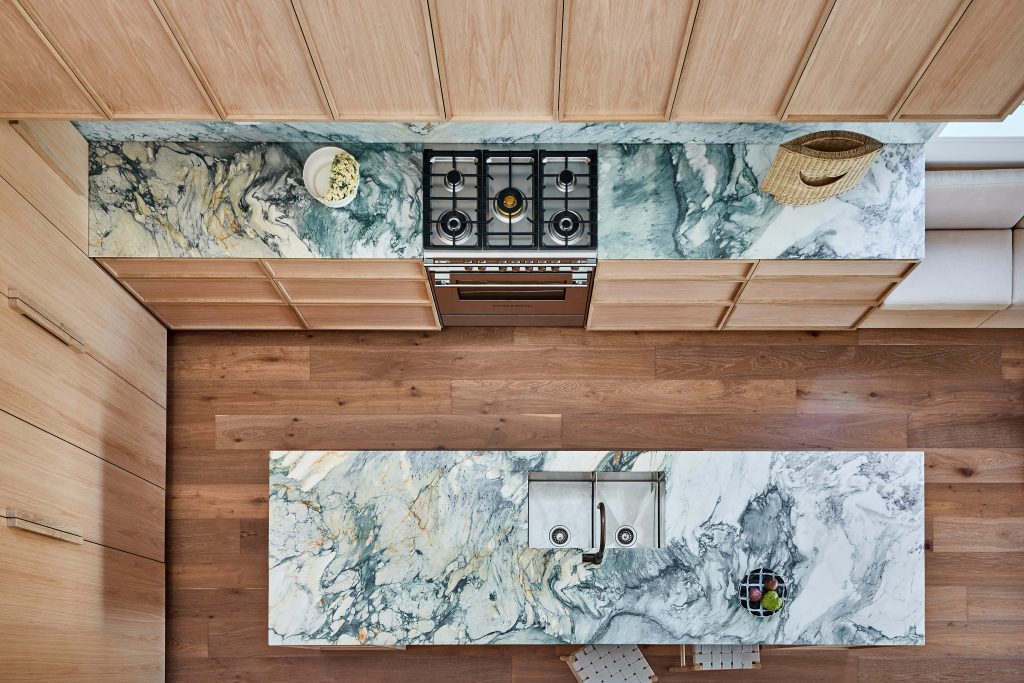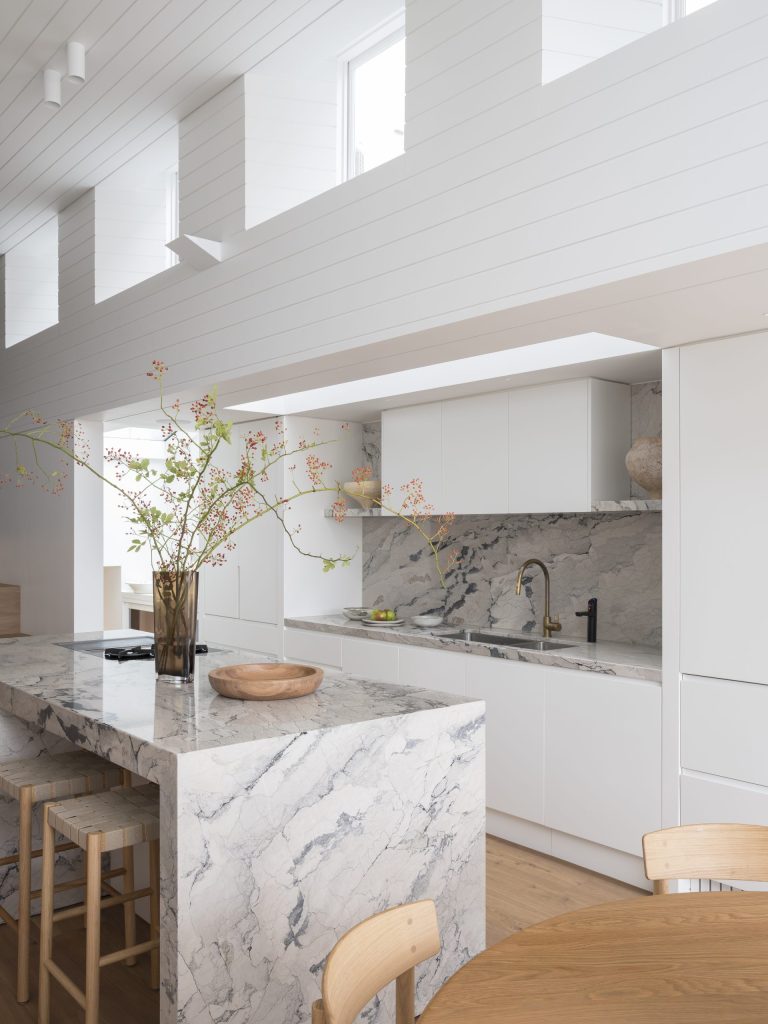How to Maintain the Beauty of Natural Stone
Natural stone is more than a surface choice – it’s a statement. A considered investment in premium materials, expert craftsmanship, and timeless design. And like any luxury piece, it deserves care that matches its quality. With the right care routine, your natural stone – whether used across benchtops, flooring or feature walls – will maintain its beauty and performance for years to come.
From marble to quartzite and travertine, this guide will show you how to clean, seal, and protect your natural stone.
Why Natural Stone Care Matters
When well cared for, natural stone surfaces age gracefully. Without care, they age poorly.
Stone is naturally porous and without the proper sealing and cleaning, surfaces can stain, etch, discolour, or lose their finish entirely. Routine maintenance doesn’t just keep your space looking its best; it preserves the structural integrity of the stone itself. Especially in high-use areas like kitchens and bathrooms, proactive care is essential for long-term durability.
Understand Your Stone Type First
Common Stone Types We Work With:
- Marble – generally less dense compared to granite and quartzite and is susceptible to etching. It’s elegant and the whitest stone there is
- Quartzite – resistant to acid etching, durable, popular for benchtop application. Lighter coloured quartzites can be more absorbent, meaning careful sealing is recommended
- Granite – dense, highly resistant
- Travertine – tactile and textural, widely used for floor and wall applications, needs to be well sealed
Each natural stone has unique properties: porosity, hardness, finish, and sensitivity to acids or abrasives and not all stones respond the same way to treatment. For this reason, it’s important that you engage a stone maintenance professional to recommend the appropriate cleaning and sealing products.

Pictured is our Brescia Green Marble in the Bonny Bronte Project. Photography credit: Pablo Veiga
Sealing Your Stone – Why, When & How
Why Sealing Is Essential
Sealing natural stone reduces its porosity, helping to prevent moisture absorption, staining, and damage. It’s particularly important for areas exposed to frequent contact – think benchtops, splashbacks, flooring, and outdoor applications.
How Often to Seal
There’s no one-size-fits-all answer. How often you seal the stone depends on:
- The type of stone
- The finish (honed, polished, leathered)
- How often the surface is used
- Environmental exposure
As a general rule, stone should be resealed every 1–2 years, but consult your installer or a stone maintenance professional for a tailored schedule.
Topical vs Penetrating Sealers
- Topical Sealers: Sit on the surface and create a physical barrier. These may slightly alter the appearance or feel of the stone, and for this reason, it’s important to request a sample to be prepared for the coating’s look and feel.
- Penetrating Sealers: Absorb into the stone to provide invisible, long-lasting protection without changing the finish. However, the efficacy of the sealer decreases over time and in high traffic areas, it should be re-applied more frequently.
Tip: Always test on a small, inconspicuous area before applying sealers across the entire surface.
Call in the Pros – Not Your Tiler or Mason
While a tiler or stone mason might be responsible for installing material, they may not be qualified to seal it correctly. We recommend working with stone maintenance professionals and stone sealing specialists who understand:
- Your exact stone type and porosity
- The impact of finish and environment
- The appropriate sealer for your needs
From marble flooring to quartzite benchtop care, working with the right team ensures your stone is protected the way it should be – for now and for later.

Pictured is our Brescia Royal Marble in the Gunnamatta House. Photography credit: Anson Smart.
Daily & Weekly Cleaning Tips
What to Use:
- Soft, non-abrasive cloths or microfibre towels
- pH-neutral stone cleaners
- Warm water for everyday wipes together with regular liquid dish soap
What to Avoid:
- Vinegar, lemon, bleach, or anything acidic
- Abrasive scrubbing pads or scourers
- Leaving spills to sit for too long
While some surface wear is inevitable, harsh cleaning products will accelerate dullness, discolouration, and etching – especially on sensitive stones like marble.
Dealing with Spills, Stains & Etching
Spills happen. The trick is knowing how to manage them.
- Blot – don’t wipe. Wiping spreads the spill and risks surface damage.
- Act fast. The longer a spill sits, the deeper it may penetrate.
- Skip the DIY hacks. Avoid experimenting with online “solutions” unless verified by your stone supplier.
When in doubt, call in a pro. Particularly for stains, scratches, or light etching, a stone restoration expert can assess and treat without worsening the issue.
Embracing the Patina
Natural stone doesn’t need to look new forever. In fact, part of its beauty is the way it evolves
over time. That soft patina – the subtle evolution in tone and texture from everyday use – is what makes a space feel both lived in and effortlessly luxurious. It’s not about keeping things perfect; it’s about keeping them preserved.
Maintain, Don’t Micromanage
The key to lasting beauty isn’t complicated routines – it’s consistency. Establish a simple cleaning and sealing schedule that suits your surfaces. Consider different maintenance approaches for flooring versus benchtops. And most importantly, choose high-quality, trusted materials from the start because with the right foundation, upkeep is simply about enhancing what’s already exceptional.
Explore Worldstone’s range of premium natural stone slabs, and book your next showroom visit for recommendations on sealing and maintaining your chosen stone.
Pictured is our Brescia Royal Marble in the Paddington II. Photography credit: Tom Ferguson.

